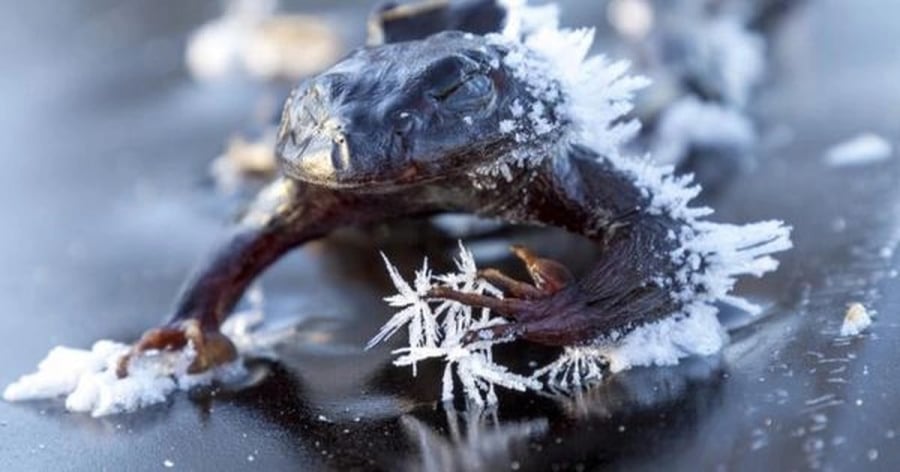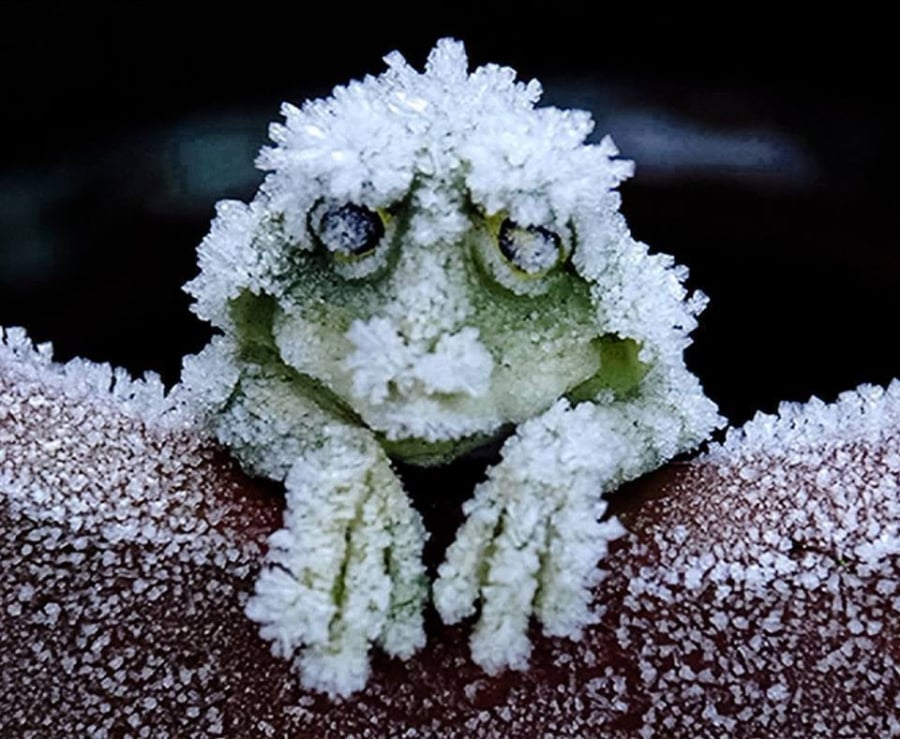Have you ever wondered about a creature that can be completely frozen, with its heart and brain ceasing to function, and then simply thaw and come back to life as if nothing happened? It sounds like something out of a sci-fi movie, but this phenomenon actually exists in nature. Meet the Alaska Wood Frog (Rana sylvatica), a superhero in the animal kingdom that I’m about to introduce to you.
Biological Mechanism: Unraveling the Mystery
To understand how this frog pulls off this extraordinary feat, let’s travel back in time to the frigid winters of North America. When temperatures drop below -10°C, the bodies of Alaska Wood Frogs begin to freeze. But don’t worry! During this process, the water in their bodies turns to ice, and vital organs like the heart and brain temporarily stop functioning. However, this is not death, but a unique state of “cryogenic sleep.”
The key to their survival lies in two natural substances: glucose and urea. As temperatures plummet, these frogs release large amounts of glucose and urea, acting as “anti-freeze.” These substances protect cells from being damaged by ice crystals and keep the body in a stable condition. Amazingly, when spring arrives and the ice melts, their bodies gradually “reboot.” Hearts start beating, brains become active again, and they resume their normal lives as if they hadn’t just survived a freezing winter.

Alaska Wood Frog: Champion of Harsh Climates
The Alaska Wood Frog is a shining example of nature’s incredible adaptability. This frog species primarily inhabits Alaska, Canada, and other frigid regions of North America, choosing a harsh environment where many other animals struggle to survive.
What fascinates me the most is their remarkable resilience; even with over 65% of their bodies frozen, they can recover almost perfectly. Studies have shown that even after being completely frozen for weeks or months, their survival rate remains impressively high. This is truly nature’s miracle!

Scientific Significance and Potential Applications
The abilities of the Alaska Wood Frog are not merely intriguing; they open doors to groundbreaking scientific research.
In medicine, understanding their freezing mechanism could lead to improved organ preservation techniques. Currently, donated organs can only be stored for a short period before transplantation. By applying the principles learned from these frogs, we could extend storage times and save thousands more lives each year.
Additionally, this research inspires space exploration. For long-duration space missions, inducing a state of “cryogenic sleep” in astronauts could reduce the need for food, water, and living space. This would enable humans to explore distant planets without worrying about the decades-long travel time.

Conclusion: Nature’s Marvels
Nature never ceases to amaze us with its secrets. The Alaska Wood Frog showcases the power of adaptation and survival. It teaches us that life can persist, even in the harshest conditions, in ways we might never have imagined.
The story of this extraordinary frog is not just about awe; it’s a reminder that countless mysteries await discovery. Perhaps, in the near future, studies on these frogs will lead to significant advances in medicine and technology.
So, the next time you see a tiny frog, remember that it might hold wonders beyond our current comprehension. Life is full of surprises, isn’t it?






































